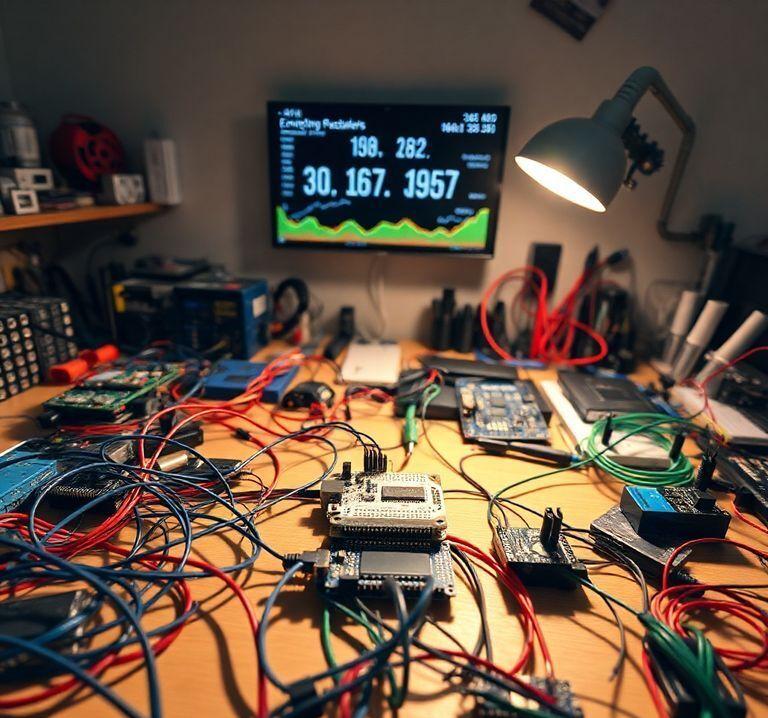Energy Management in Smart Homes with Arduino and ESP32
10.12.2024 - Engine: Gemini

Energy Management in Smart Homes with Arduino and ESP32
Introduction
With the growing awareness of sustainability and cost savings, homeowners are looking for ways to optimize energy consumption in their homes. Smart homes, equipped with intelligent devices such as sensors, controllers, and microcontrollers, offer a solution to this challenge.
Arduino and ESP32 for Energy Management
Arduino and ESP32 are popular microcontroller platforms that are ideal for energy management. These devices provide an affordable and efficient way to monitor energy consumption data and implement automated control functions.
Monitoring Energy Consumption
The first step to energy management is monitoring energy consumption. Here are some ways in which Arduino and ESP32 can be used to monitor energy consumption:
- Current Transformers: These devices convert AC current into a voltage output that is proportional to the current flowing. The voltage can then be measured by Arduino or ESP32 and converted into energy consumption.
- Smart Meters: Smart meters measure energy consumption in real-time and provide detailed data on usage. Arduino or ESP32 can interface with smart meters to collect and analyze data.
Optimizing Energy Consumption
Once energy consumption is monitored, measures can be taken to optimize it. Here are some ways in which Arduino and ESP32 can be used to optimize energy consumption:
- Automatic Power Off: Devices that are not in use can be automatically turned off to save energy. Sensors can be used to detect motion or presence and control devices accordingly.
- Smart Plugs: Smart plugs are plugged between outlets and devices and allow for remote control and scheduling. They can be used to automatically turn off devices at certain times of the day or limit power consumption.
- Low Power Modes: Arduino or ESP32 can be used to implement low power modes for devices. These modes can reduce power by lowering the clock frequency or disabling functions when devices are not fully utilized.
Implementation
Implementing an energy management system with Arduino or ESP32 involves the following steps:
- Hardware Selection: Select appropriate sensors, measurement devices, and controllers.
- Software Development: Write code that controls the hardware, collects data, and makes decisions to optimize energy consumption.
- Setup: Install the hardware and software and connect all components.
- Monitoring and Optimization: Monitor the energy consumption regularly and make adjustments as necessary to improve energy efficiency.
Benefits
Implementing an energy management system with Arduino or ESP32 offers the following benefits:
- Reduced energy consumption and utility bills
- Increased sustainability and reduced carbon footprint
- Remote control and automation of devices
- Improved comfort and convenience
Conclusion
Arduino and ESP32 are powerful tools for energy management in smart homes. By monitoring energy consumption and implementing automated controls, homeowners can optimize their energy usage, save money, and reduce their environmental impact.

